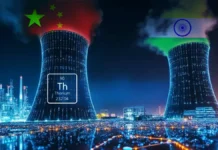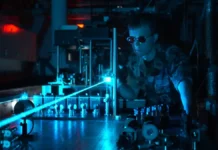Hyperreality is a concept that has been around for a while, but it has gained more prominence in recent times due to technological advancements. Hyperreality is the fusion of the physical and virtual worlds, where it becomes increasingly difficult to differentiate between what is real and what is not. In hyperreality, the boundaries between the physical and virtual worlds are blurred, and the two realms intersect seamlessly. In other words, we are living in a world where our experiences are mediated by technology, where simulations and representations are taking over the real. This article explores the concept of hyperreality and its implications for our understanding of the world.
Contents
What is Hyperreality?
Hyperreality is a term used to describe the condition where the boundary between the real world and its representation becomes blurred. In a hyperreal world, the distinction between what is real and what is not is no longer clear. This is because our experiences are increasingly mediated by technology, which creates simulations and representations of reality that can be mistaken for the real thing. The concept of hyperreality was first introduced by French philosopher Jean Baudrillard in his book “Simulacra and Simulation” published in 1981.
According to Baudrillard, hyperreality is the result of the proliferation of simulations that have replaced the real world. He argued that in a hyperreal world, signs and symbols take on more importance than the things they represent. For example, a photograph of a person is no longer a representation of that person but has become the person in the eyes of the viewer. This is because the photograph has taken on a life of its own, detached from the reality it represents.
The Emergence of Hyperreality
The rise of hyperreality can be attributed to technological advancements such as Virtual Reality (VR), Augmented Reality (AR), and Mixed Reality (MR). VR immerses users in a completely virtual world, while AR overlays virtual objects onto the physical world. MR, on the other hand, blends the physical and virtual worlds seamlessly, creating a new reality altogether. With these technologies, it is now possible to interact with the virtual world as if it were real, and vice versa.
Implications of Hyperreality
The implications of hyperreality are far-reaching and can impact different sectors such as entertainment, education, and healthcare. Hyperreality has opened up new possibilities for immersive experiences in the entertainment industry, such as virtual concerts and gaming. In education, hyperreality has enabled the creation of interactive learning experiences that bridge the gap between theory and practice. In healthcare, hyperreality has been used for pain management and cognitive therapy.
In a hyperreal world, we are no longer able to distinguish between reality and simulation. This has led to several problems, including the following:
- Loss of Authenticity: In a hyperreal world, authenticity has become a rare commodity. This is because everything is a simulation, and there is no longer any reference to the real. As a result, people have become detached from the real world and are more concerned with the simulation of that world.
- Fragmentation of Experience: In a hyperreal world, the experience becomes fragmented as people are exposed to a multitude of simulations and representations of reality. This leads to a loss of depth and meaning in experience, as everything becomes superficial and fleeting.
- Loss of Connection: In a hyperreal world, people become disconnected from each other and the real world. This is because they are more concerned with the simulation of reality than with reality itself. As a result, relationships become shallow and artificial.
- Loss of Meaning: In a hyperreal world, the meaning becomes elusive as everything becomes a simulation. People can no longer connect with the natural world and are left searching for meaning in a world of simulations and representations.
Hyperreality and Technology
Technology has played a significant role in the development of hyperreality. It has allowed us to create simulations and representations of reality that are increasingly convincing. This has led to the proliferation of virtual reality and augmented reality technologies that allow us to experience simulations of reality in a more immersive way.
However, technology has also contributed to the loss of authenticity and connection in the world. As people become more reliant on technology, they become disconnected from the real world and each other. This has led to several social and psychological problems, including loneliness, depression, and anxiety.
Hyperreality and Consumer Culture
Consumer culture has also contributed to the development of hyperreality. Advertising and marketing have created a world where products and brands are more important than the real world. This has led to a culture where people are defined by what they consume, rather than who they are.
Consumer culture has also led to the fragmentation of experience and the loss of meaning. In a world where everything is a commodity, the experience becomes reduced to the act of consumption. This has led to a culture of instant gratification, where people seek out immediate pleasure without any regard for the long-term consequences.
Hyperreality and Politics
The concept of hyperreality has significant implications for politics as well. In a hyperreal world, political discourse becomes detached from reality and is more concerned with the simulation of reality. This has led to the rise of political leaders who are more concerned with creating a narrative than with addressing real-world problems.
Hyperreality has also contributed to the development of echo chambers, where people are only exposed to information confirming their beliefs. This has led to a polarization of politics and a breakdown in dialogue between opposing sides.
Hyperreality and the Environment
The concept of hyperreality has significant implications for the environment as well. In a hyperreal world, people become disconnected from the natural world and are more concerned with the simulation of that world. This has led to a culture of consumption and waste, where people are more concerned with acquiring things than with preserving the environment.
Hyperreality has also contributed to the development of a culture of denial, where people are more concerned with the simulation of reality than with addressing real-world problems. This has led to a lack of action on issues such as climate change and environmental degradation.
The Challenges of Hyperreality
While hyperreality offers many benefits, it also presents some challenges. One of the biggest challenges is the potential for addiction. As hyperreality becomes increasingly immersive, it can be difficult to distinguish between the virtual and physical worlds, leading to addiction and a disconnect from reality. Additionally, there are concerns about privacy and security, as hyperreality requires the use of personal data to create personalized experiences.
The Future of Hyperreality
Hyperreality is a relatively new concept, and its full potential is yet to be realized. However, hyperreality will continue to shape our future, and we can expect to see more innovative use cases in the coming years. As technology continues to evolve, we can expect hyperreality to become more seamless, immersive, and everywhere.
Conclusion
Hyperreality is a concept that describes the condition where the boundary between the real world and its representation becomes blurred. In a hyperreal world, people are more concerned with the simulation of reality than with reality itself. This has led to a loss of authenticity, connection, and meaning in the world.
Hyperreality has significant implications for every aspect of our lives, from technology to politics to the environment. It is a problem that requires a multifaceted solution, one that addresses the cultural, social, and technological factors that have contributed to its development.
To combat hyperreality, we need to reestablish our connection with the real world. We need to prioritize authenticity, connection, and meaning in our lives. We need to recognize the importance of the natural world and take action to preserve it. And we need to engage in dialogue with those who hold opposing views, rather than retreating into our echo chambers.
The solution to hyperreality is to recognize that the real world is still out there, waiting for us to connect with it. We need to step away from our simulations and representations and re-engage with the real. Only then can we address the problems that hyperreality has created and build a more authentic, connected, and meaningful world.
In conclusion, hyperreality is a concept that has the potential to transform the way we interact with the world. While it presents some challenges, the benefits of hyperreality cannot be ignored. As technology continues to evolve, we can expect to see more innovative use cases of hyperreality that will revolutionize different sectors of our society. We hope that this article has provided you with valuable insights into hyperreality and its implications for our future. If you liked reading this article then share it with your friends.
Sources
- Simulacra and Simulation. (n.d.). University of Michigan Press.
- The Virtual Window, Massachusetts Institute of Technology. (2022, October 20). Book Details – MIT Press. MIT Press.
FACT CHECK: We strive for accuracy and fairness. But if you see something that doesn’t look right, please Contact us.
DISCLOSURE: This Article may contain affiliate links and Sponsored ads, to know more please read our Privacy Policy.
Stay Updated: Follow our WhatsApp Channel and Telegram Channel.












